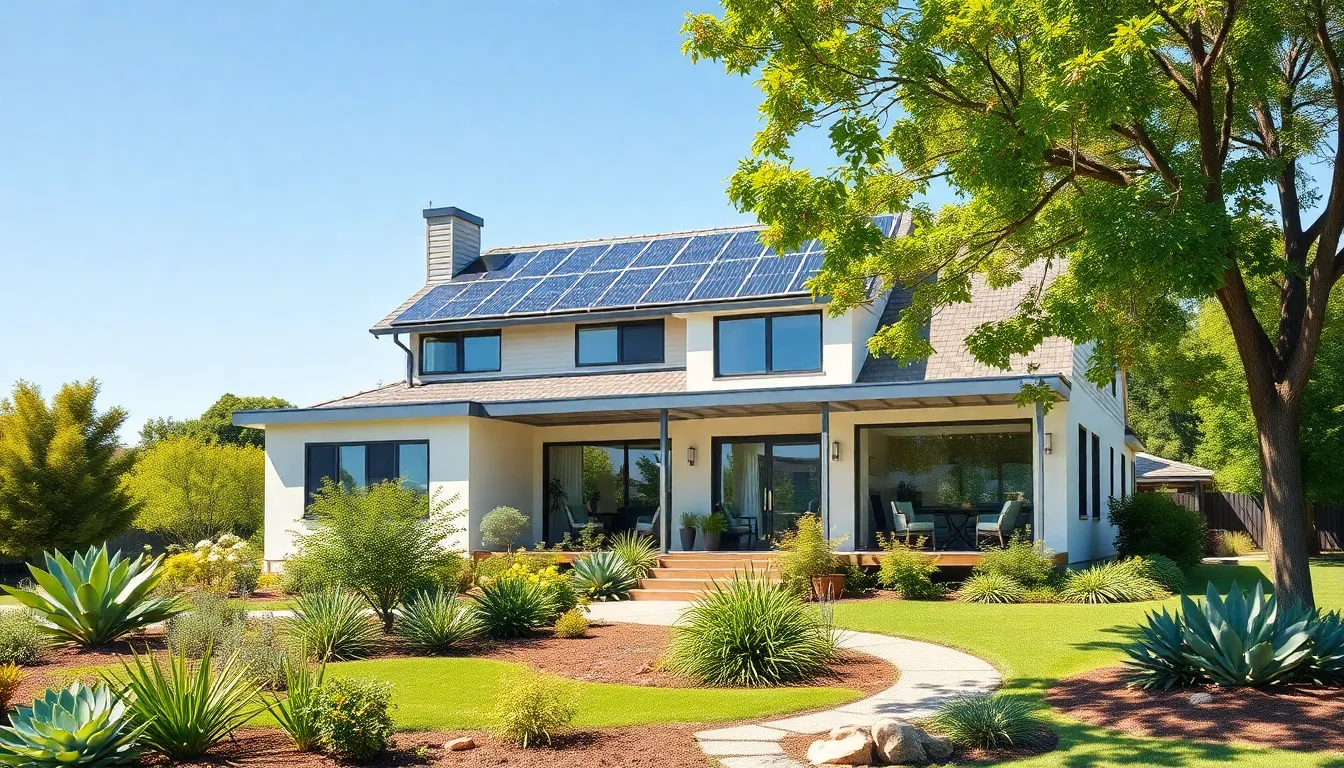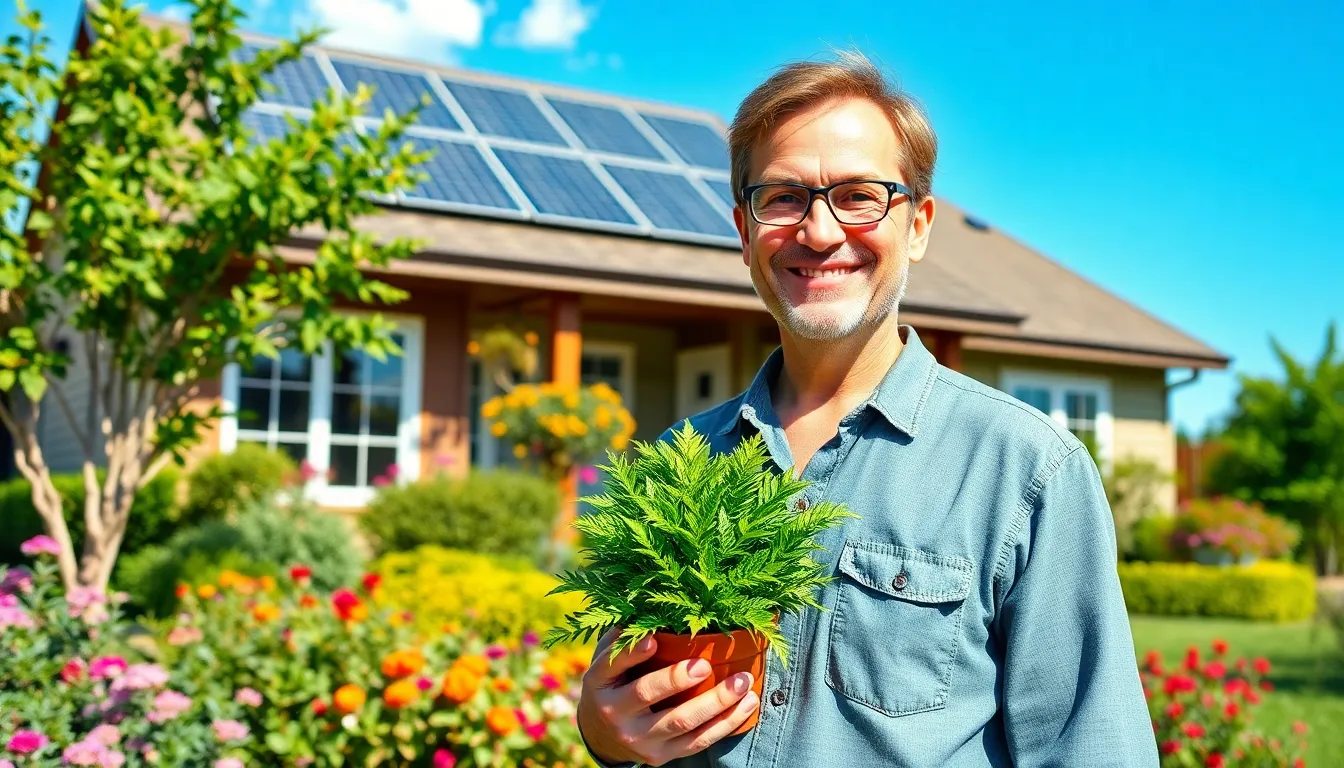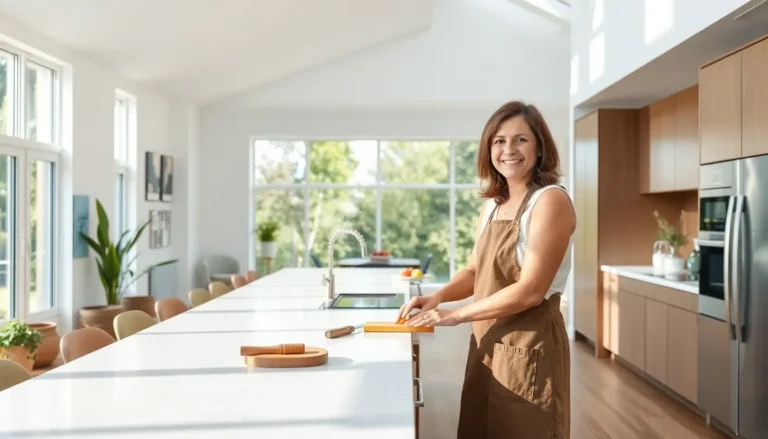In a world where “going green” isn’t just a trend but a necessity, eco-friendly renovation is the superhero every home needs. Imagine transforming your space into a stylish sanctuary while saving the planet—sounds like a win-win, right? By adopting sustainable practices, homeowners can breathe new life into their properties without leaving a carbon footprint the size of a dinosaur.
Table of Contents
ToggleWhat Is Eco-Friendly Renovation?
Eco-friendly renovation entails updating or improving a home while prioritizing environmental sustainability. This type of renovation focuses on using sustainable materials and energy-efficient practices. By choosing recyclable materials, homeowners reduce waste and promote resource conservation.
Green building practices play a crucial role in eco-friendly renovations. Such practices include utilizing energy-efficient appliances, optimizing insulation, and installing solar panels. These choices help minimize energy consumption and lower utility costs.
Aiming for eco-friendly renovation means considering the entire lifecycle of a project. Homeowners evaluate how material choices impact the environment not just during use but throughout production and disposal. Sustainable practices also improve indoor air quality, benefiting residents’ health.
Adopting eco-friendly strategies can enhance property value. A study by the National Association of Realtors found that 56% of homebuyers are willing to pay more for features that save energy. Moreover, eco-friendly renovations frequently result in lower maintenance costs, making them cost-effective over time.
Incorporating elements like natural light and green roofs can create a more inviting space. Plenty of options exist for enhancing curb appeal with eco-friendly landscaping, such as drought-resistant plants and native species. These features attract attention while supporting local ecosystems.
Commitment to eco-friendly renovation shapes a positive relationship with the environment. Homeowners not only reduce their ecological footprint but also inspire their communities to follow suit. Through these efforts, they contribute to a healthier planet for future generations.
Benefits of Eco-Friendly Renovation


Eco-friendly renovation offers numerous advantages. Homeowners can contribute positively to the environment while enhancing their living spaces.
Environmental Impact
Eco-friendly renovation significantly lowers carbon footprints. By using sustainable materials, properties minimize waste during renovations. Energy-efficient practices, such as installing solar panels, reduce energy consumption considerably. Indoor air quality improves with non-toxic materials, promoting healthier living. Choosing recyclable and renewable resources fosters resource conservation, supporting environmental sustainability. Green landscaping enhances biodiversity, creating inviting spaces that benefit local ecosystems. Homeowners affect climate change positively by embracing eco-friendly renovation choices.
Cost Savings
Cost savings result from eco-friendly renovation in multiple ways. Energy-efficient appliances lead to reduced utility bills, providing long-term financial benefits. Lower maintenance costs often accompany sustainable materials, minimizing repair expenses over time. Many states offer tax incentives for energy-efficient upgrades, increasing financial returns. The resale value of homes can rise with eco-friendly features, appealing to environmentally conscious buyers. Renovations that prioritize sustainability lead to greater overall savings, making them a wise investment choice. Combining eco-friendly practices with cost-effective measures creates a financially sound approach to home improvement.
Key Strategies for Eco-Friendly Renovation
Eco-friendly renovation requires thoughtful planning and strategic choices. Focusing on sustainable practices ensures that home upgrades contribute positively to the environment.
Sustainable Materials
Selecting sustainable materials is essential for minimizing environmental impact. Homeowners often choose recycled products like reclaimed wood or repurposed finishes. Using bamboo or cork also provides eco-friendly flooring options. Non-toxic paints and finishes improve indoor air quality while protecting health. Additionally, opting for low-VOC materials helps reduce harmful emissions during and after the renovation process. Sustainable choices not only promote resource conservation but also showcase a commitment to responsible living, making homes more appealing to environmentally conscious buyers.
Energy Efficiency Improvements
Energy efficiency improvements play a crucial role in reducing overall consumption. Installing energy-efficient appliances leads to significant savings on utility bills. Upgrading insulation minimizes heat loss and maintains a comfortable indoor temperature. Incorporating smart home technology allows for better energy management, adjusting usage patterns to match occupancy. Homeowners often install solar panels to harness renewable energy and further decrease reliance on fossil fuels. Implementing these strategies ultimately lowers carbon footprints, making a lasting positive impact on the environment.
Common Mistakes to Avoid
Homeowners often overlook thorough planning when embarking on eco-friendly renovations. Failing to assess the entire lifecycle of materials can lead to poor choices that negate environmental benefits. Neglecting to choose sustainable materials, such as recycled options or bamboo, may increase waste instead of reducing it.
Many individuals underestimate the importance of energy efficiency. Using appliances that aren’t energy rated can result in higher consumption and utility costs. Not considering insulation upgrades also leads to increased energy use.
Another common mistake involves picking non-toxic materials without verifying certifications. It’s essential to check for low-VOC finishes to maintain good indoor air quality. Skipping this step could compromise the health benefits of eco-friendly choices.
Homeowners sometimes rush into projects without adequate research. Exploring local resources and grants for sustainable renovations can provide financial assistance. Ignoring potential tax incentives diminishes the economic advantages of eco-friendly upgrades.
Failing to integrate natural light into design often results in missed opportunities for energy savings. Allowing sunlight to minimize daytime lighting needs enhances both aesthetics and utility efficiency.
Selecting landscaping options without regard for local ecosystems can negatively impact the environment. Choosing drought-resistant plants supports sustainability and reduces water consumption.
Lastly, many underestimate the value of contractor experience with green building practices. Engaging professionals skilled in eco-friendly renovations ensures adherence to best practices. This choice positively affects project outcomes while promoting sustainable approaches.



